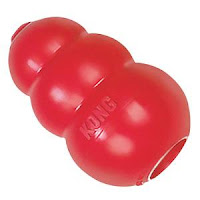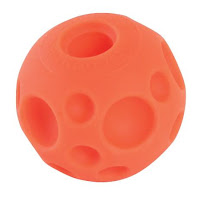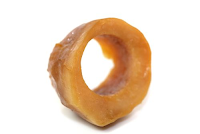We are coming up on holiday time and with it comes many gatherings, which to your dog means free food! Dogs are opportunistic scavengers and this is never more obvious then when we have food out on the table or counter. In the wild if a dog came across something to eat they wouldn’t look around to see if it belongs to someone else before diving in, and we shouldn’t expect them to in our kitchen. A dog who steals food is not a bad dog, they just haven’t been taught (in a way they can understand) what is and what is not acceptable.
Not only is it a nuisance behaviour but it can be potentially dangerous. There are several foods that can be toxic to your dog, along with some everyday kitchen utensils that can pose a threat. I had a personal experience with a client’s pup who liked to steal towels off the table, counter and front of the stove. One day they had a blender set out to dry on a towel on the counter and their brazen little pup grabbed the corner and gave it a good tug. Fortunately, no one was hurt but the pup was so frightened he refused to enter the kitchen for several days.
With a few simple lessons and some set-ups there is lots of time to have your pup on his/her best behaviour before your guests arrive.
Teach ‘Leave It’
Step 1 - start by enticing your pup with a treat tucked away in your fist, as soon as they come up to sniff it say 'leave it' in a very matter of fact tone and wait. As soon as your pup backs off or looks away immediately say 'yes' and release the treat. Some will pick this up very quickly and some may not but as long as they aren't getting any crumbs from the treat they will eventually give up and back away. As they begin to understand the game they will jump back when they hear 'leave it' and when they do say ‘yes’ and give them the treat. Once they reach this point you can move on to the next step.
Step 2 – with your dog on leash allow some slack while holding the end. Show your pup the treat, say 'leave it' and toss the treat just out of reach. If they go for it give them a quick, gentle pop on the leash keeping them away from the treat. You may say leave it again along with each 'pop' if more than one is needed. As with step one as soon as they back away, or stop pulling, say 'yes' and immediately pick up the treat and give it to them. Once they are great at this stage you can make it more difficult by using better treats, more treats or nudging the treats closer as they are 'leaving it'.
Set Ups
Set ups are essential to changing any unwanted dog behaviour. When doing a set up leave a sample of food, maybe start with something simple like a cracker, and place it somewhere that you know your dog is likely to go for. Act as though you are busy but don’t take your eyes off the dog and at the exact moment they go for it use the leave it command with a firm tone moving quickly to block your dog from the food. If your dog jumps back or walks away praise them with an enthusiastic ‘good dog!’ and go back to pretending you are busy. Continue on with the set up for a few minutes to see if your pup will try again. If they don’t, consider it a successful session, pick up the food and go about your day. If the command and swift movement isn’t enough to deter your dog you may want in include an interrupter (next paragraph). If done correctly and often enough, your dog will learn that food anywhere but their food bowl is out of bounds. They may even begin to assume it’s a set up and think twice about going for it in the first place!
Interrupters
An interrupter is a redirecting noise that encourages your dog to stop an undesired behaviour. Many dogs will react to a firm ‘no’ or ‘ah-ah’, but for the tougher tempered pups an interrupter may be needed. The noise should be just loud enough to grab their attention but not to scare them. Interrupters come in many forms. There are two that I use, one is homemade and one can be found at your local pet store.
Shaker can – this is an empty pop can filled with pennies with tape over the opening. The more pennies the louder the sound it will make. Start with 10-15 and add more if needed.
The Pet Corrector – this is a small can of pressurized air that emits a loud hissing noise when you push the trigger. I have found this tool to be very effective even when working with strong tempered dogs.
Once you have taught your dog ‘leave it’ and you are confident that they fully understand the command you are ready to begin with the setups. If needed you can use an interrupter along with the ‘leave it’. The end goal is to eventually wean off of the interrupter and rely only on the voice command itself but sometimes tying the two together will give you optimal results.
The most important element when teaching your dog to ‘leave it’ is timing. As with all training the timing of the reward or consequence is limited to 2-3 seconds. In order to be fair and sure your dog knows what is expected be aware of the timing. Lastly, if you catch your dog stealing food and you are not prepared to deal with it immediately just remove any food that’s left and plan to do a lesson later. Training is never successful when you are angry. Do lots of setup’s and your pup will be steering clear of your food in no time.










